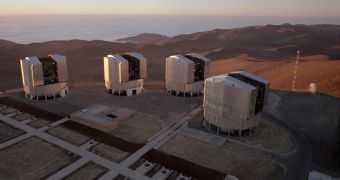A new computer program makes it easier to identify the stars on a particular piece of the sky, thus helping astronomers do their job in less time and with higher accuracy. It works for all kinds of pictures, from those taken by large telescopes to those captured by amateur astronomers.
The computer program has been developed by computer science PhD candidate Dustin Lang and graduate student Keir Mierle, from the University of Toronto, as part of a joint effort with astronomers at New York University.
The collaboration is called astronometry.net and it involves the new system that can find out what stars are visible in an ordinary image of the sky, and it's a continuation of the original concept of Professor Sam Roweis, Lang's supervisor, aiming to combine state-of-the-art machine learning and computer vision to resolve huge amounts of astronomical data.
"We call it a blind astronometry solver," said Lang. "It's a bit like going outside on a dark night and trying to find the constellations, except we're trying to recognize images that come from all kinds of cameras, amateur telescopes, large ground-based telescopes and space telescopes such as the Hubble Space Telescope."
The program will be dealing with information about a billion stars and it's a massive engineering and computational effort that will make life easier for astronomers worldwide.
"Some of the images we are trying to solve cover less than a millionth of the area of the sky - about 10 per cent of the size of the full moon," said Lang. The new computer program will help both amateur and professional astronomers and could be used to track down spectacular events, like supernovae, comets, pulsars, as well as ordinary stars.
"Observatories around the world have large archives of photographic plates, some going back to the early 1800s. These collections are being scanned to make them available digitally; if astronomers could easily tap into these images, they would have a much longer history to look for changes over time," concluded Lang.

 14 DAY TRIAL //
14 DAY TRIAL //